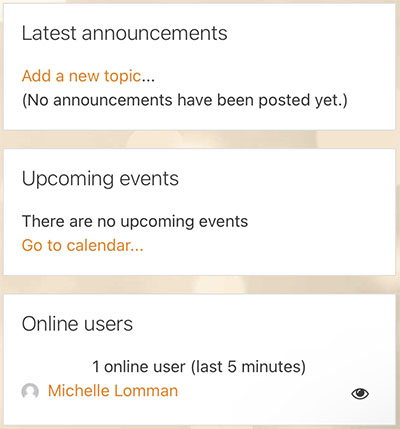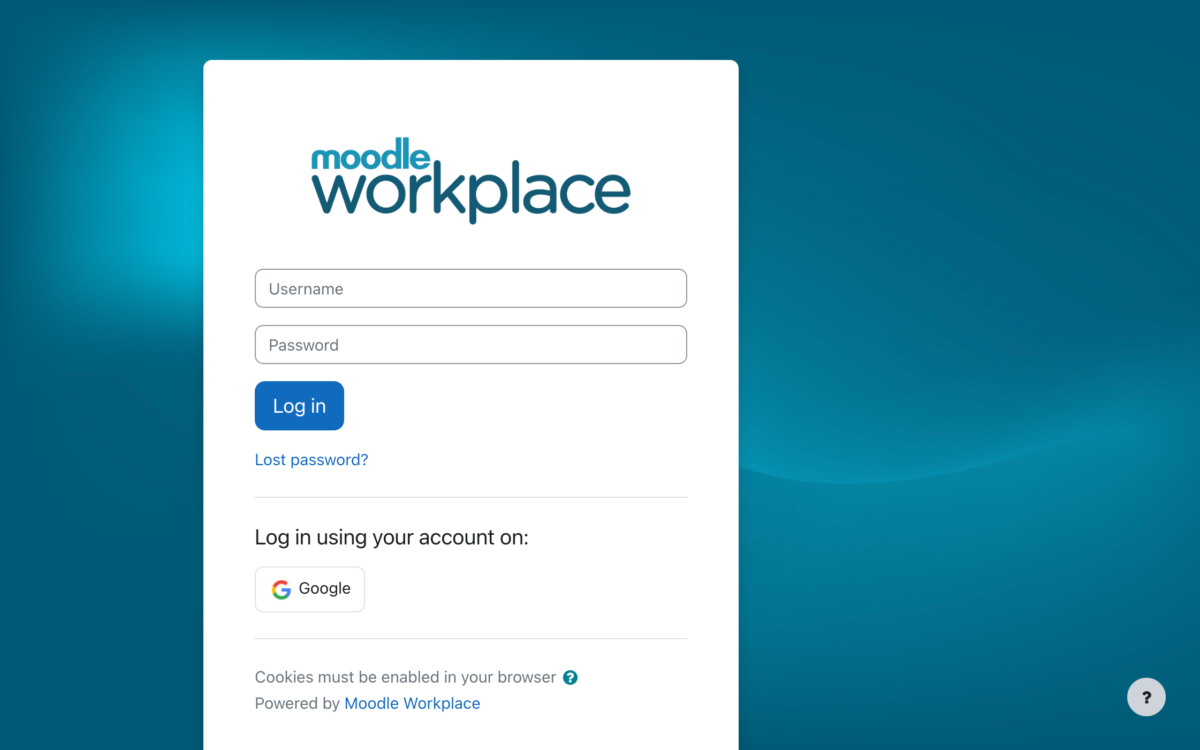The simple yet vital steps you can take.
Whether you’re building Moodle courses for your own use or for others to use, it is vital you focus on the needs of the learners. Think of the last time you studied online. Was it a good experience? Why?
Learners want to focus on their learning, not on how to use the online platform. This is especially important to remember if your learners will be accessing more than one of your Moodle courses. This is where it can be useful to think of the 80/20 rule…80% consistency with 20% variety. You are seeking to achieve consistency and yet difference. You want your courses to be consistent enough that learners can easily find and use your courses and yet sufficiently different to avoid boredom.
There are some very simple ways to achieve this, including addressing:
- Course settings
- Blocks
- Sections
- Activities and resources
- Naming conventions
- Instructions
- Grader report
- Course completion
Course Settings
Your course settings can effect how your course looks and the features that are available. Learners will greatly appreciate the course format being consistent in all of their Moodle courses, as it has such a big impact on the look of the course and its navigation.
This isn’t to say you can’t or shouldn’t use a variety of course formats, but firstly think very carefully about why you are choosing a different format. Will the benefits outweigh the negative of learners being exposed to a new way of navigating the course?
Not only consider which course format but also its settings, such as whether all sections are shown on the same page and whether hidden sections are invisible.
There are other course settings to consider when it comes to consistency, such as using the activity report, grader report and groups. Which reports users can access and how they look can make a big difference to a user’s experience. How they can interact with other groups can also change a user’s experience in your courses.
The challenging part is there isn’t necessarily a right and wrong as to which settings you choose, it is more a matter of taking the time to think about what you are trying to achieve and how you can make it a seamless and consistent experience for your learners.
Blocks
Blocks are an excellent way to provide additional features in your Moodle courses. However do remember that less is more! If you have too many blocks you will overwhelm your learners or key features will be lost in the mix. So carefully consider which blocks you will use and why. Then consider the order the blocks should appear in. Finally consider the settings you will use on each block as this can effect how they function. Where possible keep your blocks consistent so learners know where to find things and how they will work.
Blocks are an excellent way to provide additional features in your Moodle courses. However do remember that less is more! If you have too many blocks you will overwhelm your learners or key features will be lost in the mix. So carefully consider which blocks you will use and why. Then consider the order the blocks should appear in. Finally consider the settings you will use on each block as this can effect how they function. Where possible keep your blocks consistent so learners know where to find things and how they will work.

Sections
There are a number of considerations when it comes to how you use sections in your Moodle course. The number of sections you use certainly doesn’t need to be the same in each course, but the general structure you use when breaking up your courses into sections should be consistent.
What will your introductory section be called? Will your content be broken into topics or session numbers? Also consider what names will you give to sections and what order will they appear in. Don’t leave your learners guessing or hunting to find things. Look for opportunities to chunk down content and to provide a logical sequence for learners.
Activities & Resources
When it comes to the types of activities and resources you use in your courses, you definitely want to achieve a balance of consistency and difference.
Avoid the temptation to use as many activity and resource types as you can simply to provide variety. It is vital that your selection of tools is based on providing the best learning experience. You are seeking meaningful learning experiences.
Learners will definitely appreciate a balance of variety and consistency. Avoid boring learners by constantly using the same types of tools. Even consider how you will name activities and resources so that learners can easily identify what they will be doing and what to expect. When was the last time you looked at your course to see how many of the same type of activity/resource you have used and well learners interacted with them?
Remember that settings in each activity and resource can have a big impact on how items behave, so where possible be consistent with your settings so that learners can predict how items will behave.

Naming Conventions
This applies to everything throughout your Moodle including, course names, section names as well as activity and resource names.
Put thought into your naming conventions so that they are succinct and meaningful. Once again think about what will make the most sense to your learners.
You may be too close to what you are creating so it may be worth having someone else cast fresh eyes over your course to provide you with some quick feedback on how easily they could figure out where to go and what to do.
Instructions
You want learners to easily understand what they need to do, when and how. This is best achieved through a great course design that is simple, clean and intuitive. Throughout your courses you may need to provide instructions, however if you find yourself needing to put a lot of instructions, this could indicate that your course design needs refinement.
When adding instructions, where possible it is ideal if instructions are consistent. So think about your use of language and whether it is intuitive to your learners. Once again having someone with fresh eyes review some of your instructions can give you new insights into how learners will perceive what you are asking them to do.
Grader Report
Sometimes we forget how important the grader report and user report can be. Learners always want to know what they have to do to pass and what they have passed so far. Keeping reports organised and well structured can help you and your learners keep track of progress. If your reports are consistent it makes it quick and easy to find items.
To achieve this, leverage the grade book setup to set up categories to organise items and calculations. Tweak the course grade settings page to refine what your learners will see in their user report so that only meaningful columns are displayed to your learners.
Course Completion
Help your learners understand when they have completed your course. By setting the course completion settings in your Moodle courses you make life easier for both you and your learners. These settings control the progress percentage on their dashboard. These settings also control what appears in the course completion report that you can access. This can be really helpful if you have a blend of formative and summative activities.
When you set activity completion settings for activities it automatically adds the item to the activity completion report. This can mean you end up with a very big activity completion report in some courses. By setting which items are included in course completion your course completion report can provide you with a succinct view of how learners are tracking toward what they have to do to pass. Consider if you can have a consistent approach to course completion requirements so that learners automatically know what is most important.
Well there you have it! A raft of ways you can easily improve the online experience for your learners when they are accessing more than one of your Moodle courses.







